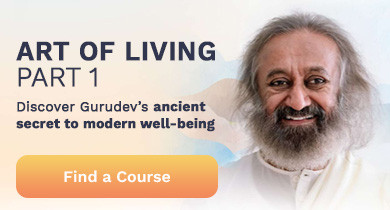By Elizabeth Herman I Posted : October 27, 2020
With these 4 pranayama breathing techniques, you can unlock your inner creative potential, relieving stress, and avoiding burnout at the same time.
International trends show that creative energy in the U.S. is waning. Compared to countries with high percentages of workers engaged in innovative pursuits, we’re no longer in the top ten. Research shows that only 23.6 percent of our workforce are solving complex problems in new ways. Ireland, Belgium, and Australia have over 30 percent.
Knowing that we’re becoming less creative can spur us on. How can we nurture our creative process? Can our own breath help in this? Probably yes. Let us explore what yogic science says about the power of our own breath.
What is creativity?
Oxford Languages defines it as “the use of the imagination or original ideas, especially in the production of an artistic work.” But creativity is not restricted to artistic expressions. Even when you get bored eating the same routine foods, again and again, you look for some creative ideas to try something new. This is true in theatre, music, literature, dance, teaching, architecture, mathematics, computers, sports, and many other areas. Each field calls for creativity to break the monotony.
How does being creative and innovative help you?
Have you ever experienced a rush of interest in work after one of your colleagues shared a new way of approaching a humdrum task? When routines become monotonous, creativity brings feelings of enthusiasm and freshness.
Creativity brings a new beginning for "time.” When you’re creative, you break the monotony of time. Everything becomes fresh and alive. Creativity brings along with it a new round of enthusiasm. Both creative and procreative impulses in nature are associated with enthusiasm. When you’re enthusiastic, you’re closer to the creative principle of existence.
Creativity prevents the sense of burnout that can come from overwork. Taking up a creative pursuit can relieve your stress and anxiety. You can find refuge from boredom in painting pictures or playing music on weekends. You can use journal writing to move past an episode of writer’s block and express your pent up feelings. Presenting any frustrations can help you avoid fights with family, friends, or co-workers. Creative activities can help you think of novel approaches to problems. Whether professional or personal, difficult situations can resolve with music, dance, or art.
Expressing yourself can be one goal of creativity. Communicating well can result from skillful self-expression, thus improving relationships. Another goal could be engaging others in your passion for an art form. You can help others and touch the minds and emotions of your audiences, as well as your own artistic mind. A collective goal would be a culture with a vibrant and flourishing creative life.
What is the source of our creativity?
You may have heard that genuine creative ideas come from deep within us, from the silent space within us. When the mind is too active and tired with thousands of thoughts, you get perplexed and creativity seems far-fetched. But when the same mind relaxes, rests well, and is silent, creativity sprouts from within us.
Founder of Art of Living, Gurudev Sri Sri Ravi Shankar, says, “Deep silence is the mother of creativity. No creativity can come out of one who is too busy, worried, over-ambitious or lethargic. Balanced activity, rest, and yoga can kindle skills and creativity in you. If we maintain two minutes of silence every day, then we will see that a whole new dimension of life opens up.”
Pranayama breathing and meditation are some of the time-tested tools to give deep stillness and relaxation to the mind. Let us understand this more.
I am so logical. How can I do more creative thinking?
There are 3 modes of thinking: convergent thinking, divergent thinking, and lateral thinking. Convergent thinking uses logic, divergent thinking uses imagination (creativity) while lateral thinking uses both logic and imagination.
Our right brain is connected with creativity, imagination, and the left brain with logical thinking. So if you’re into a profession like engineering or accounting, you’re probably using your left brain more. So enhancing creativity can balance your left and right sides of the brain. Using the right brain, the creative side complements the left brain work that you do.
“When the two hemispheres of the brain are balanced, you can experience higher clarity, higher creativity, higher productivity, higher efficiency, and higher relaxation.," explains Gurudev. He probably refers here to lateral thinking which is a fine balance of both creative and logical thinking. So if you are too logical and trained more into logical thinking, to keep balance, prevent burnout, and stimulate your creative side, you need to use both sides of your brain equally. To get there, an easy breathing technique like alternate nostril breathing can come in handy. Keep reading further to learn more about it.
Creativity and chakras: How are they related?
If you have been practicing yoga, you may have heard this word from your yoga teacher - chakras (subtle energy centers in the body). Find more about the chakras in this beginner’s guide.
We often think of creativity as a flow of energy. Yogis say that the second chakra or sacral chakra is associated with creativity. When your prana (chi or life force energy) moves upward and passes through this center, it’s easier to access your subconscious. That’s when creativity can ignite. By channeling the prana upward, you can create tangible reflections of an unlimited source of innovation. Pranayama—channeling, controlling or regulating the life force energy—comes into the picture.
How pranayama breathing can help with creativity
Our breath is a gross dimension of prana. Yogis believe that our breath pattern has a direct impact on the flow of prana. When we control the breath, we can regulate the flow of energy and strengthen our mind-body connection.
Our emotions and breath are also connected. Emotions can trigger many thought waves. If you were in a state of emotional frenzy, if you took a long deep breath and noticed, you’d start feeling calmer. This shows that the way you breathe will help to calm the racing mind. It’s said that 50,000 or more thoughts run through your conscious mind every single day.
Pranayama techniques allow us to be more aware, be in the present, and focus inward, removing distractions from the outside world. We're able to connect to our intuition and inner guidance.
Breathing releases you from any unproductive fixations on stubborn problems. You can experience aha moments (sudden flashes of helpful, creative insights). These realizations will bring about the free flow of inspiration.
Pranayama breathing improves blood circulation in the brain. Bringing fresh prana to the brain also helps creative thinking.
I recommend you add regular pranayama breathing and meditation to your asana (yoga poses) practice. Including pranayama in your yoga practice will clear your mind of unnecessary thought cobwebs and revitalize your entire body with an immediate flow of fresh oxygen and nutrients. This can help immensely to surge your creative power.
Best pranayama breathing (yoga breathing techniques) for creativity
There are several pranayama breathing techniques like full yogic breathing or diaphragmatic breathing, ujjayi breathing, deep breathing, breath retention, bee breathing, but the following four are particularly useful for igniting the creativity spark:
1) Alternate Nostril Breathing (Nadi Shodhan pranayama)
This brain hemisphere equalizing and purifying yoga breathing technique leads to deep calmness. Breathing on only one side at a time stimulates the opposite side of the brain. It will help you quiet your tendency for self-judgment, also known as the inner critic.
How to do it:
Close your eyes and sit comfortably. Focus on your breath as it flows naturally at a normal pace.
Rest your right middle and index fingers between the eyebrows. Leave your right hand’s thumb, ring finger, and pinkie open. Your left hand rests comfortably on the left knee.
Close your right nostril with your right thumb. Gently and slowly, exhale, and then inhale, through your left nostril.
Release your right nostril. Using your ring finger, close your left nostril. Exhale and then inhale slowly and lightly through your right nostril.
Practice alternate nostril breathing for two to five minutes. Relax with each inhalation and exhalation.
Slowly open your eyes and write, draw, paint, play music, or dance, observing how it feels.
2) Observational breathing with journaling
Simple deep breathing into the belly can bring you to a deep state of mind for creative activities. It helps to contract the abdomen when you exhale and expand it when you inhale.
How to do it:
Find a quiet, comfortable place to lie down.
Breathe, naturally. Pay attention to each aspect of your breath: where it goes, how fast or slow, the temperature going in and out, etc.
Observe your pace and the intensity and movement of your deep breath into your body and out again, in detail.
After a minute or two, notice your palms and feet. See if you can direct your breath into these extremities. Imagine them expanding. Exhale and relax. Continue expanding your hands and feet when you inhale. Continue to notice this expansion with each in-breath, until you realize it could go on forever.
After a few minutes, notice the tips of your fingers and toes, and wiggle them slightly. Hug your knees. Slowly move and open your eyes, gently returning to your creative flow.
3) Skull Shining Breath (Kapalabhati)
This breath can increase our intuitive abilities. At the same time, it detoxifies the body and purifies and opens up our energy channels. It often forms part of an advanced practice. It might help you to ease into it if you learn victory breath and alternate nostril breathing before you try it.
How to do it:
Start with several deep breaths, inhaling into the belly and exhaling completely.
On your next exhalation, contract your lower abdomen. Forcefully push the air out for only a second or two. If you’re a beginner, place your hands on your lower abdomen and notice the movement in this area.
Once your air has been expelled, inhale passively for the same length of time. Allow fresh oxygen to fill your lungs automatically.
Start with two to three rounds of 20 breaths each, pausing for one or two normal, slow breaths between rounds. For more creative fire, work up to double or triple the number of breath repetitions.
When you finish practicing, pause for a moment. Enjoy a rush of life force, mental clarity, and creative energy.
4) SKY Breath Meditation
SKY Breath Meditation is one of the most powerful breathing exercises in existence. Research shows that after just two weeks of practicing SKY, meditators had a 56% reduction in the stress hormone cortisol—with results from the very first session. You can boost your creative energy very soon after starting a regular practice. Because of its powerful impact, it is recommended to learn it under the direct supervision of a trained teacher.
If you are stuck, bored of monotony, and want to ignite the creative spark within you, check out Beyond Breath - A FREE Breath & Meditation Online Session. You will do guided breathwork and meditation with a live instructor who can answer all your questions. Before the daily rut robs away your enthusiasm and freedom, take the step that can lead you to a new, joyful, and inspired way of living. Take charge of your life now!
Elizabeth Herman is a long time meditator, a trained yoga teacher, and a PhD in English, with concentrations in Rhetoric and Composition, and Literature. She offers writing support to clients, teaches locally, and volunteers for a better world.



























